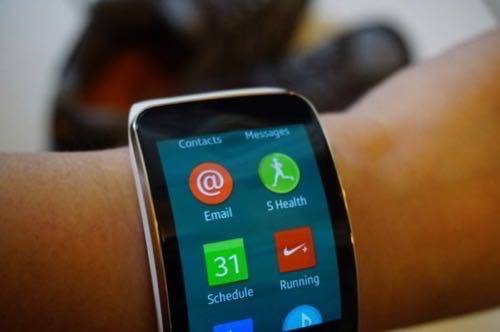
ReadWriteBody is an ongoing series where ReadWrite covers networked fitness and the quantified self.
One of the interesting things about writing ReadWriteBody, where I’ve chosen to focus on digital fitness, is the constant conflation of health and fitness.
As I remarked during a panel I moderated on Wednesday evening, it’s often treated like it’s one word: “healthandfitness.”
You see this confusion in the wearables market, which has lurched in its marketing between these two poles. Is a smart wristband designed to get couch potatoes moving? Or will it help people who are already very active optimize their bodies?
Big Health vs. Fast Fitness
This is a large market that’s getting larger. A year ago, 1 in 10 Americans owned some kind of wearable device. That’s now up to 1 in 5, according to PwC, with half of the people who have a wearable using it daily.
That still leaves lots of people who have never owned a wearable, though.
The problem for people building apps and gadgets which track our bodies and our movement is that the broadest possible market—and the biggest gain to society—is on the health side of things. If you can move someone who’s prediabetic—there are an estimated 86 million such people in the United States—away from the danger zone through better exercise and nutrition, that’s a huge win for that person and for our health system.
But the people buying hardware and signing up for premium subscriptions tend to already be healthy. The people who are most engaged with fitness apps are worried about winning triathlons, not fighting for their lives. They also have a glut of choices.
So you see two contradictory trends in the market: Companies who came out with lifestyle-oriented products are emphasizing workout-friendly features. An example of this is Intel’s Basis: Its original B1 was more of an all-day tracker, while the new Basis Peak has athletic features like compatibility with apps like Strava that can pick up its heart-rate signal.
Fitbit, too, which started with simple pedometers, has two new products coming out next year which include heart-rate measurement.
Heart rate may one day be a mass-market feature, if developers can figure out simpler ways to present insights about your health from subtle variations in your pulse. But right now, it’s more appealing to the track-and-field and CrossFit sets.
Fitness Goes Wide And Cheap
Meanwhile, makers of fitness apps which initially appealed to hardcore runners and gym rats are trying to appeal to a wider set of consumers. Examples of this include RunKeeper’s Breeze and Runtastic’s Runtastic Me, a fitness-dashboard app.
The other trend with fitness trackers is to get, well, cheaper. The Misfit Flash and Jawbone Move, both priced at under $50, are examples of this. They’re competing with free apps on users’ smartphones, which simply use built-in sensors to track activity.
Amid these cross currents come the smartwatches. There’s the Apple Watch, out next year, which has some vaguely defined fitness features—for example, it’s not clear how precise its heart-rate data will be. (Apple only says it will help “gauge your intensity.”) Other smartwatches now on the market, like the Microsoft Band and Samsung Gear Fit, offer heart rate, but don’t do a great job of putting context around it.
See also: ReadWrite’s coverage of the Apple Watch
I think we’ll see smartwatches take the high end of the market, sophisticated trackers like the Fitbit Surge and Basis Peak going for the middle, and the cheap sub-$50 trackers persisting because of their low, gift-friendly price point. And more and more functions will move into smartphones, which many people now consider to be wearables, too, given the time they spend on our bodies.
This process of market segmentation is a natural one. But it still doesn’t answer the key question for wearables: Why? For health? Or for fitness? Smarter, cheaper devices won’t answer that question. Only when we see more thoughtful design, animated by specific goals for improving users’ lives, will we find out what wearables are for.
Photo by Adriana Lee for ReadWrite









